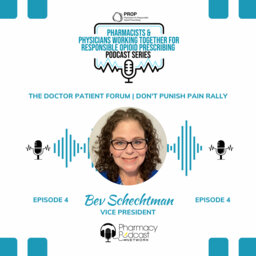Understanding the Challenges of Patient Medication Adherence | RxSafe
RxSafe Podcast Series
RxSafe's core values guide everything they do, every day. They represent the qualities we look for in the people they hire, their beliefs about how th…Background: Positive associations between medication adherence and beneficial outcomes primarily come from studying filling/consumption behaviors after therapy initiation. Few studies have focused on what happens before initiation, the point from prescribing to dispensing of an initial prescription.
Objective: to provide guidance and encourage high-quality research on the relationship between beneficial outcomes and initial medication adherence (IMA), the rate initially prescribed medication is dispensed.
Using “Initial Medication Adherence” IMA rigorously & include providing convincing evidence that initial prescribing and dispensing events are identified, supplemental parameters incorporating perspective and substitution biases are addressed, and contextual parameters are included.
Medications are the most common treatment regimen used in ambulatory health care. Yet, adhering to prescribed medications is a major issue affecting health care because nonadherence has been associated with worsening clinical symptoms and disease progression. Furthermore, medication nonadherence has been linked to increased health care visits, services, and costs. Studies linking nonadherence to these unfavorable outcomes have used various operational definitions for adherence—each with its own nomenclature (e.g., persistence), several representing similar if not exact components of medication adherence, which we call initial medication adherence (IMA).
For example: the IMA process begins with a prescriber and patient interaction in an emergency room/ department, hospital, or other clinic setting (step 1) that results in a prescribing event (step 2)—the first of the two key events needed for an IMA measurement. When a prescribing event occurs, data collected from the perspective of either a prescriber or a patient will capture it, whereas data collected from the perspective of a pharmacist will not. To qualify as IMA, however, the prescribing event must relate to a patient’s first prescription within a therapeutic class (step 4).
Otherwise, the dispensing event becomes part of a PIMA metric (step 5).
Data from either the patient or the prescriber should be able to determine whether the prescribing event is an initial event. The pharmacist becomes aware of prescribing events only when these events are communicated to the pharmacist for filling (step 6).
Therefore, the pharmacist does not know how many prescribing events have occurred, only how many have been communicated. However, once the pharmacist receives the prescription (step 7) and fills it (step 8), the pharmacist must dispense the prescription to the patient (step 9). The dispensing event is the second key event needed for measuring IMA (step 10).
With dispensing the medication to the patient, both the pharmacist and the patient know that the IMA is achieved, but the prescriber does not. If a pharmacist does not dispense a filled prescription, the prescription becomes abandoned to the pharmacist and is restocked (step 11).
If an abandoned prescription is not transferred to another pharmacist (step 12) and subsequently dispensed, the patient will be initially nonadherent (step 13). Either the pharmacist or the prescriber may transfer the prescription from one pharmacy to another, but neither may know that the prescription has been dispensed.
— How can pharmacists use the IMA process in communications with physicians? — Explain how pharmacists can educate patients about better adherence with their initial prescriptions—What are the main reasons for medication non-adherence?
 Pharmacy Podcast Network
Pharmacy Podcast Network



